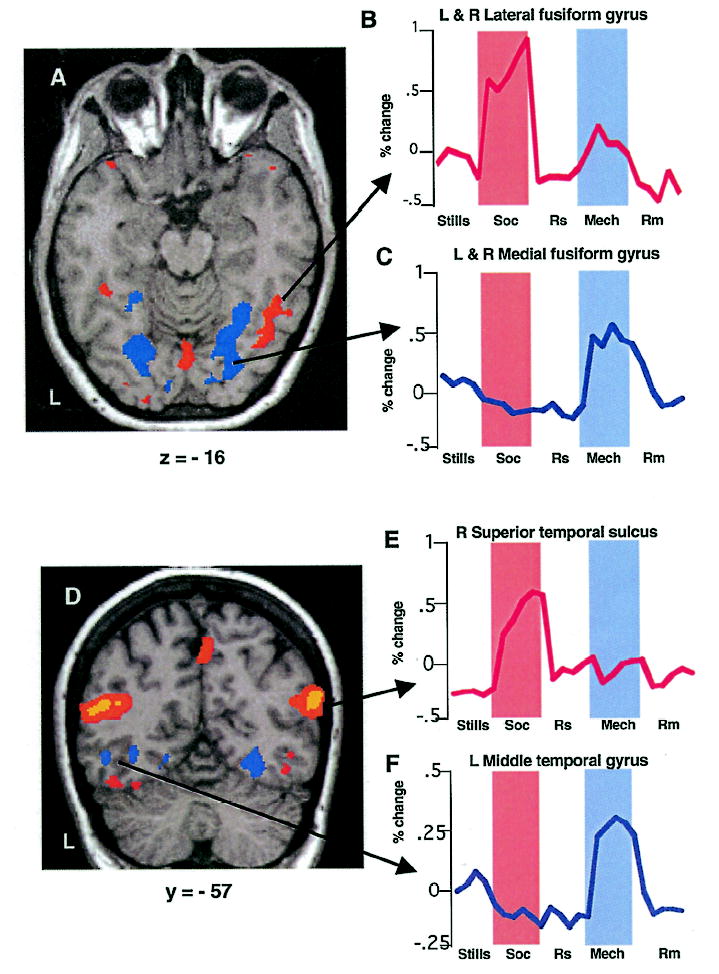Figure 2.

Activations in posterior occipitotemporal cortex. Group averaged activity superimposed on a brain slice from an individual subject. Shown in colour are regions that responded more to meaningful than to random motion conditions. Regions in red were more active for social than mechanical vignettes, regions in blue were more active for mechanical than social vignettes. (A) Axial view at the Talairach and Tournoux coordinate of z = −16 showing differential activity in ventral occipitotemporal regions. Haemodynamic responses of voxels within lateral (B) and medial (C) fusiform gyrus that also showed enhanced activity to moving versus still geometric forms. These time series, as well as all others included in the figures, were averaged across subjects. (D) Coronal section at y = −57 showing activated regions in lateral temporal cortex. Haemodynamic response from voxels in the right STS (E) and left middle temporal gyrus/inferior temporal sulcus (F). Soc = social vignettes, Mech = mechanical vignettes, Rs and Rm = random control conditions for social and mechanical vignettes, respectively.
